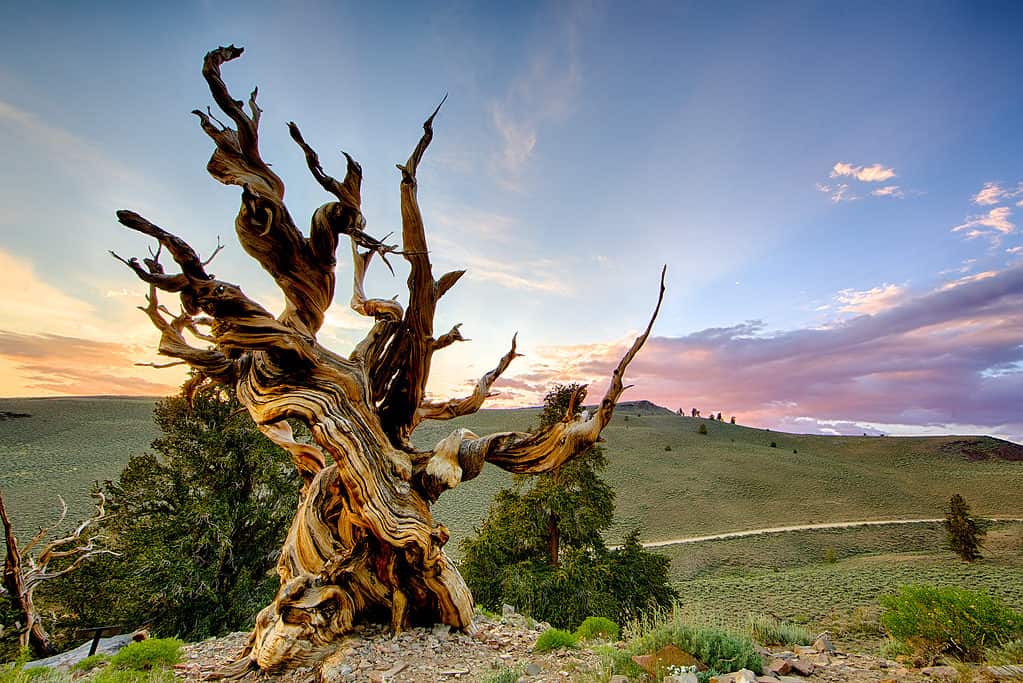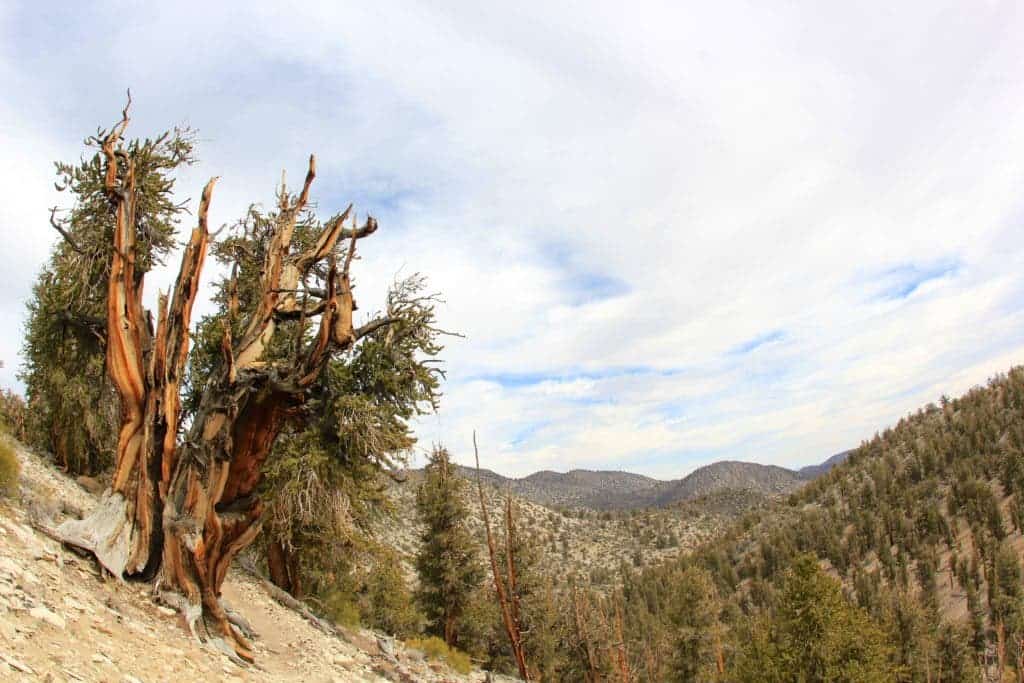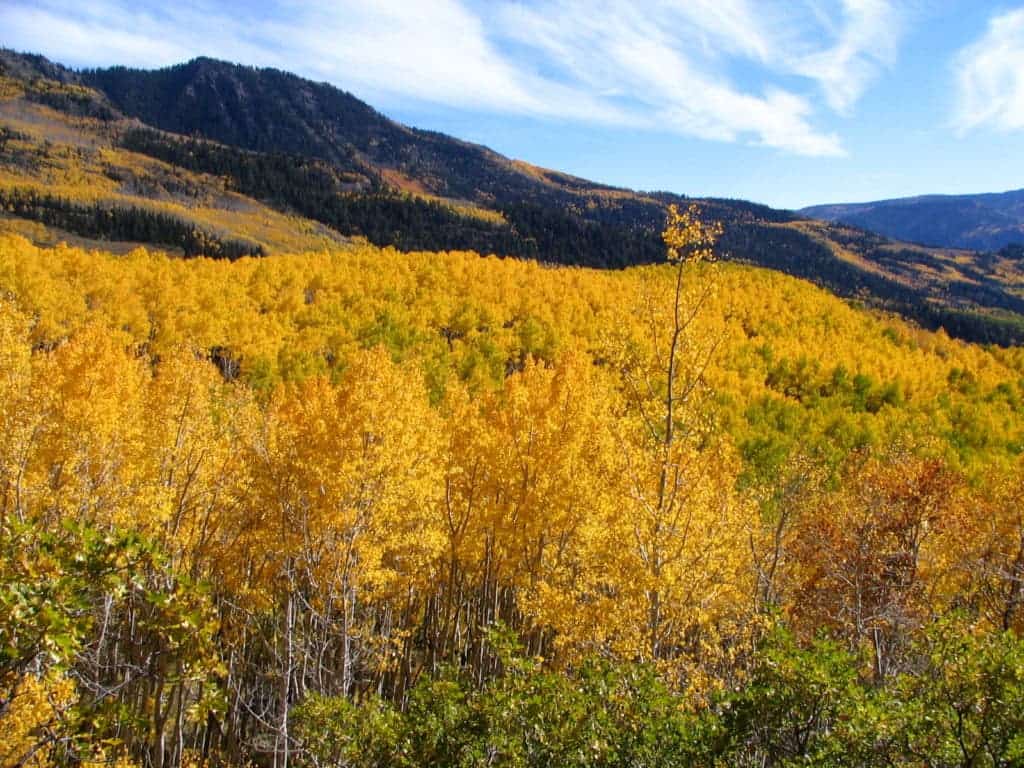
Just like Treebeard the Ent claims to be the oldest creature in Middle Earth, trees are among the oldest living beings on real Earth too. The oldest tree depends on what you count as a “tree” but ranges from 5,000 to 80,000 years. Now that’s a long time!
Trees have been around for such a long time because a long life means that there is more opportunity to reproduce. Therefore a longer life has been evolutionarily selected for, and trees have unique abilities such as being able to replace organs, part of the tree being able to survive even if the whole is damaged, and their array of defense compounds.
There are two types of trees that we need to consider when discussing tree age: individual trees and identical clonal colonies. Clonal colonies differ from individual trees in that each tree in a colony is genetically identical and connected via a root system, so you can consider them as one organism although there might be many trees. Clonal colonies might be old as a whole, but no single tree is particularly old.
The oldest single tree in the world
Until recently, the oldest tree in the world was widely regarded to be a 4,850-year-old Great Basin bristlecone pine (Pinus longaeva) called Methuselah. Named after the biblical figure said to have lived for 969 years, Methuselah has stood in the White Mountains for more than four and a half millennia. To put that into perspective, when Methuselah first took root, the ancient Egyptians were just beginning to build the Great Pyramid of Giza.
Since 2013, Methuselah has been surpassed as the world’s oldest tree by the discovery of another P. longaeva also located in the White Mountains with an estimated age of over 5,060 years. When this tree first started growing from seedlings, the wheel was barely invented in Mesopotamia.
The exact location of both trees is a closely guarded secret to protect the tree from vandalism and damage. Prometheus, which would be the third oldest was cut down in 1964 by a researcher who wasn’t aware of how old it was.
Single trees can be measured directly for how old they are. Usually, researchers count tree rings or estimate their age from the tree’s size and growth rate. The trunk shows how old the whole tree is (this might sound obvious, but we will see later that it isn’t).

So what makes the bristlecone pines, including Methuselah, able to survive for such an extraordinary amount of time? The key lies in the tree’s remarkable ability to adapt to its harsh environment. The White Mountains are known for their dry and unforgiving conditions, with rocky soils and high winds. But rather than succumbing to these conditions, the bristlecone pines have evolved to thrive in them.
One of the most important adaptations of the bristlecone pines is their twisted, gnarled appearance. The tree’s twisted shape helps to protect it from the strong winds that sweep through the White Mountains. The tree’s branches are also relatively small and close to the trunk, reducing the amount of surface area exposed to the sun, which helps to conserve water.
Another key adaptation of the bristlecone pines is the tree’s ability to survive on extremely poor soil. The rocky, nutrient-poor soils found in the White Mountains would be inhospitable to most other trees. But the bristlecone pines have developed a deep root system that allows them to extract water and nutrients from the soil.
In addition to these physical adaptations, bristlecone pines have also developed a unique way of growing. Instead of growing continuously, the tree adds new cells to the tips of its branches, allowing it to survive even when conditions are extremely dry.
Moreover, the Bristlecone pines have also been known to stop growing for decades, which can help them to survive during droughts, and when resources are scarce.
These pines aren’t the only trees that can live a long time; cypress, olive trees, and yew tree have also been found to be over 3,000 years old. There could be other really old trees, but they haven’t been measured yet.
The oldest clonal colony
Clonal colonies are composed of genetically identical trees that are connected by a root system. Though the trees themselves might not actually be so old, the root system and the whole organism could be much older than any individual tree. So if you aged a single tree then you would think that the tree isn’t so old, but if you aged the root system, such as with radiocarbon dating, it can be much, much older.

Here are a few examples of very old clonal tree colonies. A colony of quaking aspen trees (Populus tremuloides) in the Fishlake National Forest Utah called Pando is believed to be one of the oldest and largest organisms in the world. It covers 106 acres (43 hectares), contains around 47,000 individual trees that all share the same single root system, and it is at least 80,000 years old. It has been cloning itself for that entire period of time, so technically Pando is the oldest tree in the world. However, the individual trees in Pando are only about 130 years old. The Jurupa Oak in California is the second oldest colony at about 13,000 years old.
Old Tjikko, a Norway Spruce (Picea abies), in Norway is often called the world’s oldest tree. However, the distinction needs to be made that it is actually a clonal tree, and if you compare it to Pando then it’s still a baby colony. The tree lives to be about 100 but Old Tjikko’s root system is 9,550 years old. It is likely the only living trunk left from a former colony that started growing in the last Ice Age. Four generations of remains were found at the site, all genetically identical.

All in all, these trees are very old. When Pando started growing, modern humans were just spreading to Asia from Africa. The oldest individual tree started growing at about the same time as Stonehenge was first built, Troy was founded, and the first pharaohs reigned. These trees still stand as a remnant from a time long past.






